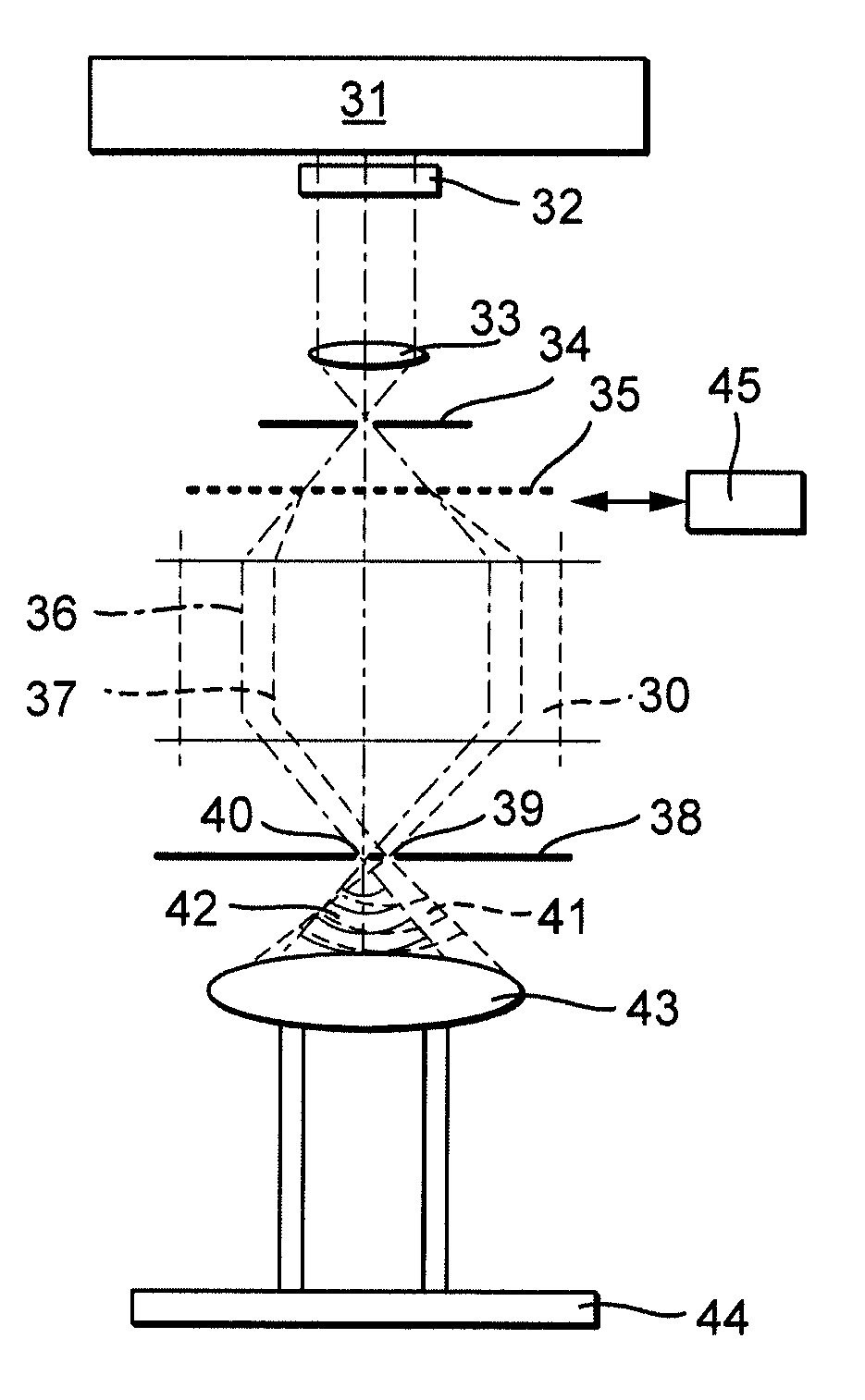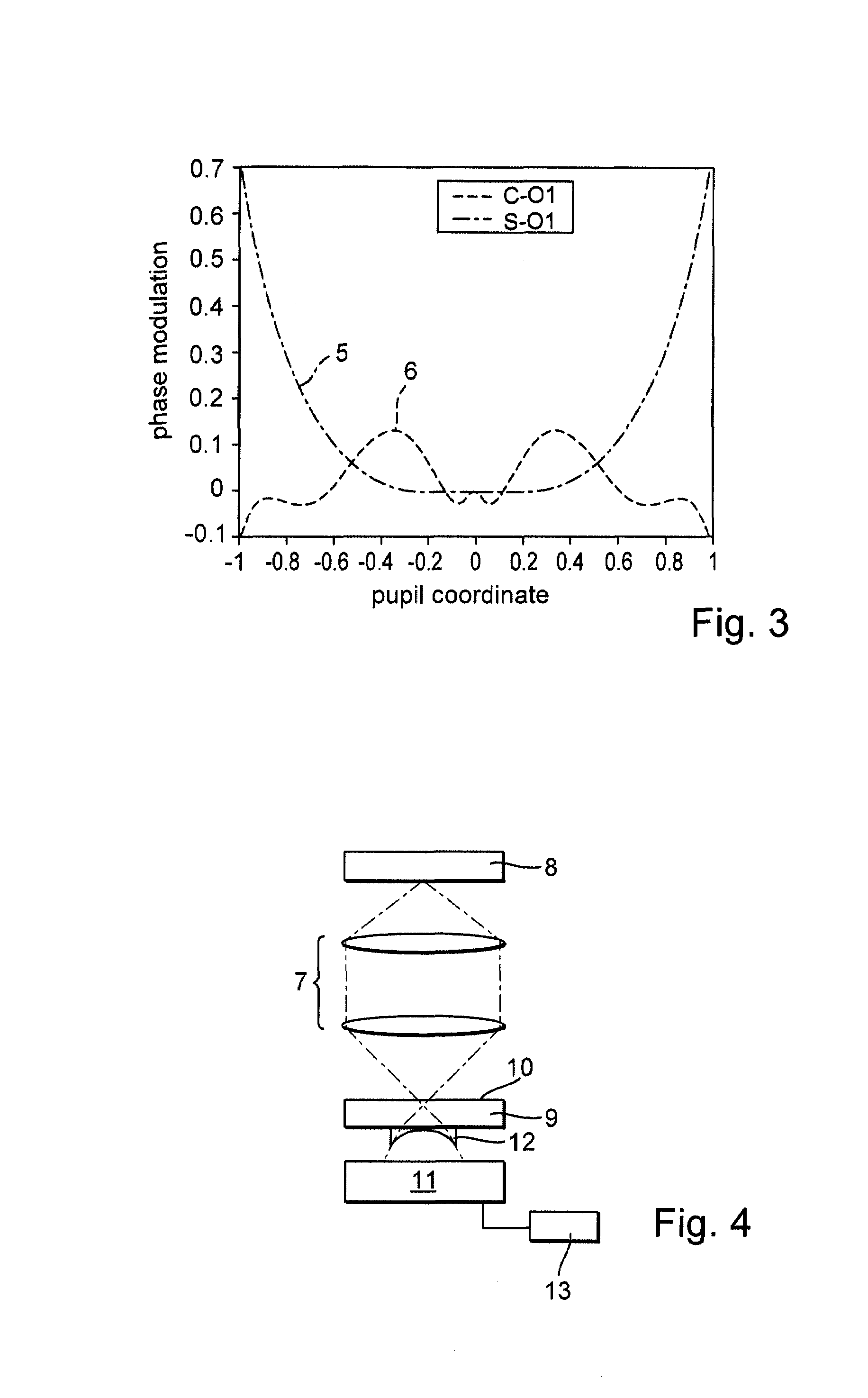Apparatus and method for measuring the wavefront of an optical system
a technology of optical system and wavefront, applied in the direction of measurement device, instrument, structural/machine measurement, etc., can solve the problems of limited detector resolution, interference pattern cannot be detected by the detector, severe limitation of the measurement range, etc., to increase the measurement range dynamics of the device, increase the measurement dynamics, and high the effect of measuring accuracy
- Summary
- Abstract
- Description
- Claims
- Application Information
AI Technical Summary
Benefits of technology
Problems solved by technology
Method used
Image
Examples
Embodiment Construction
[0033]It is known that when measuring an optical imaging system by a lateral shearing interferometry technique that a modulation of intensity of the wavefront interference pattern formed is effected for a respective pixel (n, m) within a pupil of the imaging system by the lateral phase shifting, that is to say the lateral relative movement of object-side mask structure and image-side diffraction grating structure, and this modulation is proportional to a cosine function whose argument is equal to the sum of a spatially independent phase difference between mask and diffraction grating, and of a phase difference Δφ(xn, ym), dependent on the spatial coordinate (xn, ym) of the pupil point (n, m) considered, between two different, interfering diffraction orders, for example a 0th and a +1th diffraction order. Given a phase-shifting shearing movement in an x-direction, for example, this phase difference Δφ(xn, ym) is yielded by the relationship
Δφ(xn,ym)=φ(xn+s,ym)−φ(xn,ym),
φ denoting the ...
PUM
 Login to View More
Login to View More Abstract
Description
Claims
Application Information
 Login to View More
Login to View More - R&D
- Intellectual Property
- Life Sciences
- Materials
- Tech Scout
- Unparalleled Data Quality
- Higher Quality Content
- 60% Fewer Hallucinations
Browse by: Latest US Patents, China's latest patents, Technical Efficacy Thesaurus, Application Domain, Technology Topic, Popular Technical Reports.
© 2025 PatSnap. All rights reserved.Legal|Privacy policy|Modern Slavery Act Transparency Statement|Sitemap|About US| Contact US: help@patsnap.com



